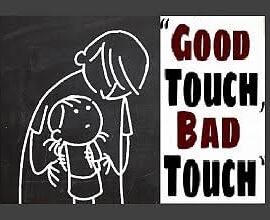As a preschool owner, I have been noticing a concerning trend in the behavior of many of the children I encounter. It is not uncommon for me to come across kids who cannot sit in one place for more than two minutes, have difficulty making eye contact, and exhibit speech delays. This phenomenon has left me puzzled and prompted me to dig deeper into the issue. Through my research, I have discovered a term called Virtual Autism that explains many of the symptoms I have observed in children. In this blog, I will share my findings about Virtual Autism and what parents and caregivers can do to help children who exhibit these behaviors.
To begin, let’s define what Virtual Autism is. Virtual Autism is a term used to describe the symptoms of autism spectrum disorder that arise from excessive screen time and a lack of face-to-face interaction with parents and caregivers. This is not to say that Virtual Autism is a new type of autism or a different condition altogether, but rather a result of the way modern-day technology has influenced the way children interact with their environment.
So, what are the symptoms of Virtual Autism? Some of the most common signs of Virtual Autism include a lack of social skills, difficulties with communication and language development, and problems with emotional regulation. Children with Virtual Autism may also have trouble with sensory processing, especially when it comes to touch and sound. Additionally, they may have a limited range of interests and show repetitive behaviors. One of the most significant challenges of Virtual Autism is that it can be challenging to diagnose.
Since the symptoms of Virtual Autism can be similar to those of autism spectrum disorder, it’s essential to have a professional evaluation to ensure an accurate diagnosis. However, if a child shows signs of Virtual Autism, it’s essential to take steps to help them overcome these challenges.
Here are some strategies that parents and caregivers can use to help children with Virtual Autism:
Limit screen time: As a preschool owner, I cannot stress enough how crucial it is to limit children’s screen time. The American Academy of Pediatrics recommends that children between the ages of two and five should have no more than one hour of screen time per day. Children between the ages of six and eighteen should have no more than two hours of screen time per day.
Promote face-to-face interaction: Children need face-to-face interaction with parents and caregivers to develop social skills, communication, and language development. Encourage your child to interact with others by playing games, having conversations, and engaging in activities that promote socialization.
Encourage physical activity: Physical activity is an excellent way to help children with Virtual Autism. Engage your child in activities such as dancing, jumping, and running to help them regulate their sensory input and improve their physical development.
Provide structure and routine: Children with Virtual Autism thrive on structure and routine. Having a predictable routine can help them feel more secure and comfortable in their environment.
Seek professional help: If your child exhibits signs of Virtual Autism, it’s essential to seek professional help. A therapist or other healthcare provider can provide guidance on how to help your child develop social skills, communication, and emotional regulation.
Virtual Autism is a growing concern in our modern-day society. As a preschool owner, I have seen firsthand how many children exhibit signs of this condition, and it’s essential for parents and caregivers to be aware of the symptoms and take action to help their children.
While Virtual Autism is not an official diagnosis, the term can help to shed light on the impact that excessive screen time can have on child development. By limiting screen time, engaging in sensory activities, addressing sleep patterns, and seeking professional support, parents can help their children thrive and overcome the challenges associated with Virtual Autism.
It is important to remember that every child is unique, and what works for one child may not work for another. However, by working together and providing a supportive environment, we can help children reach their full potential and achieve success in all areas of their lives.
-Divya Joshi










